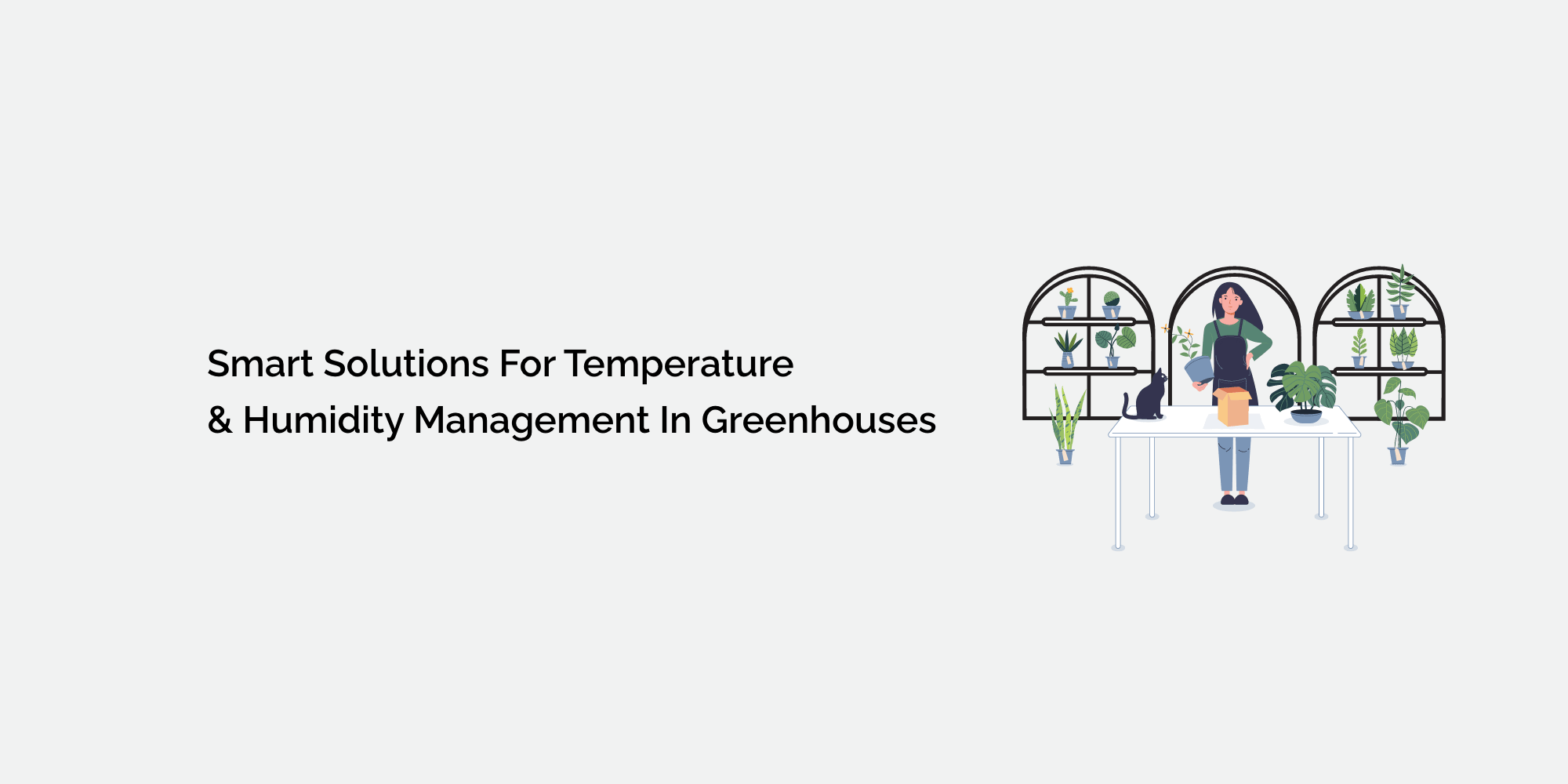Temperature and humidity are critical factors in greenhouse gardening that directly impact plant health, growth, and productivity. Maintaining optimal temperature and humidity levels can be challenging, especially with changing weather conditions. However, with the advent of intelligent technology, greenhouse operators now have access to advanced solutions that provide precise and efficient temperature and humidity management. This detailed blog post will explore the intelligent solutions available for temperature and humidity management in greenhouses. These innovative technologies offer greater control, automation, and data-driven insights, enabling greenhouse operators to create an ideal environment for their plants.
Wireless Sensor Networks for Real-Time Monitoring:
Wireless sensor networks are revolutionizing temperature and humidity management in greenhouses. These networks consist of sensors strategically placed throughout the greenhouse, wirelessly connected to a central control system. The sensors continuously monitor temperature and humidity levels, providing real-time data for analysis and control.
By utilizing wireless sensor networks, greenhouse operators can gain accurate and comprehensive insights into the greenhouse environment. This data enables precise temperature and humidity control system adjustments, ensuring optimal growing conditions. Moreover, remote access to real-time data allows operators to monitor conditions and make necessary adjustments even when off-site.
Automated Climate Control Systems:
Automated climate control systems integrate temperature and humidity sensors with various components, such as fans, vents, heaters, coolers, and humidifiers. These systems leverage sensor data to automatically adjust and optimize the greenhouse environment, ensuring consistent and ideal conditions for plant growth.
With automated climate control systems, greenhouse operators can set desired temperature and humidity parameters based on plant requirements. The system will continuously monitor the sensors and adjust to maintain the predefined conditions. This technology eliminates the need for manual monitoring and adjustments, saving time and reducing the risk of human error.
Data Analytics and Machine Learning:
Data analytics and machine learning are transforming temperature and humidity management in greenhouses. These technologies can identify patterns, correlations, and optimal control strategies by analyzing large volumes of sensor data collected over time.
Machine learning algorithms can learn from historical data and predict temperature and humidity trends, enabling proactive adjustments. These algorithms can also optimize control parameters based on past performance and specific plant requirements. The insights gained from data analytics and machine learning enhance decision-making and contribute to continuous improvement in temperature and humidity management.
Mobile Applications and Remote Control:
Mobile applications offer convenient access to temperature and humidity management in greenhouses. These apps allow greenhouse operators to remotely monitor sensor data, control climate control systems, and receive alerts or notifications about critical conditions.
With mobile applications, greenhouse operators can control temperature and humidity settings completely, even when they are away from the greenhouse. This flexibility enables them to respond quickly to changing conditions, make adjustments, and ensure optimal plant growth conditions.
Energy-Efficient Heating and Cooling Systems:
Innovative technology has also improved the energy efficiency of heating and cooling systems in greenhouses. Advanced systems utilize variable speed motors, energy-efficient heat exchange, and automated control algorithms to optimize energy consumption.
These systems adjust heating and cooling output based on real-time temperature and humidity data, ensuring energy is used efficiently. Greenhouse operators can reduce operational costs and contribute to a more sustainable greenhouse environment by minimizing energy waste.
Smart Irrigation Systems for Humidity Control:
Humidity control is crucial in greenhouse gardening, and intelligent irrigation systems are vital in achieving optimal levels. These systems utilize moisture sensors, weather data, and plant-specific information to deliver the right amount of water at the right time.
Intelligent irrigation systems can adjust watering schedules and durations based on humidity levels, preventing excessive humidity buildup. Maintaining proper moisture balance in the soil and promoting efficient water usage contribute to humidity control and plant health.
Integration with Weather Forecasting:
Integrating intelligent temperature and humidity management systems with weather forecasting adds more precision and control. Greenhouse operators can anticipate temperature and humidity changes by leveraging real-time weather data and forecasts and making proactive adjustments.
Weather integration allows for dynamic control strategies that adapt to upcoming weather conditions. For example, the system can anticipate a sudden temperature rise and activate cooling mechanisms ahead of time, ensuring a stable environment for plants.
Certainly! Here are some frequently asked questions (FAQs) about smart solutions for temperature and humidity management in greenhouses:
What are smart solutions for temperature and humidity management in greenhouses?
Smart solutions for temperature and humidity management in greenhouses encompass various technologies and systems that utilize automation, data analytics, and remote monitoring. These solutions include wireless sensor networks, automated climate control systems, data analytics and machine learning, mobile applications for remote control, energy-efficient heating and cooling systems, smart irrigation systems, and integration with weather forecasting.
How do wireless sensor networks work in greenhouse temperature and humidity management?
Wireless sensor networks consist of sensors strategically placed throughout the greenhouse, wirelessly connected to a central control system. These sensors continuously monitor temperature and humidity levels and transmit the data to the control system. This real-time data allows greenhouse operators to analyze and adjust temperature and humidity control systems to maintain optimal growing conditions.
Conclusion:
Smart solutions have revolutionized temperature and humidity management in greenhouse gardening. Through wireless sensor networks, automated climate control systems, data analytics, and machine learning, greenhouse operators can now access precise and efficient management tools. Mobile applications and remote control enable remote monitoring and adjustments, while energy-efficient systems contribute to sustainability. Smart irrigation systems and integration with weather forecasting enhance humidity control and proactive decision-making.
By embracing these smart solutions, greenhouse operators can create an ideal environment for their plants, ensuring optimal growth, health, and productivity. The future of greenhouse gardening lies in the seamless integration of technology, data-driven insights, and intelligent automation, enabling sustainable and successful cultivation in any climate or weather condition.








